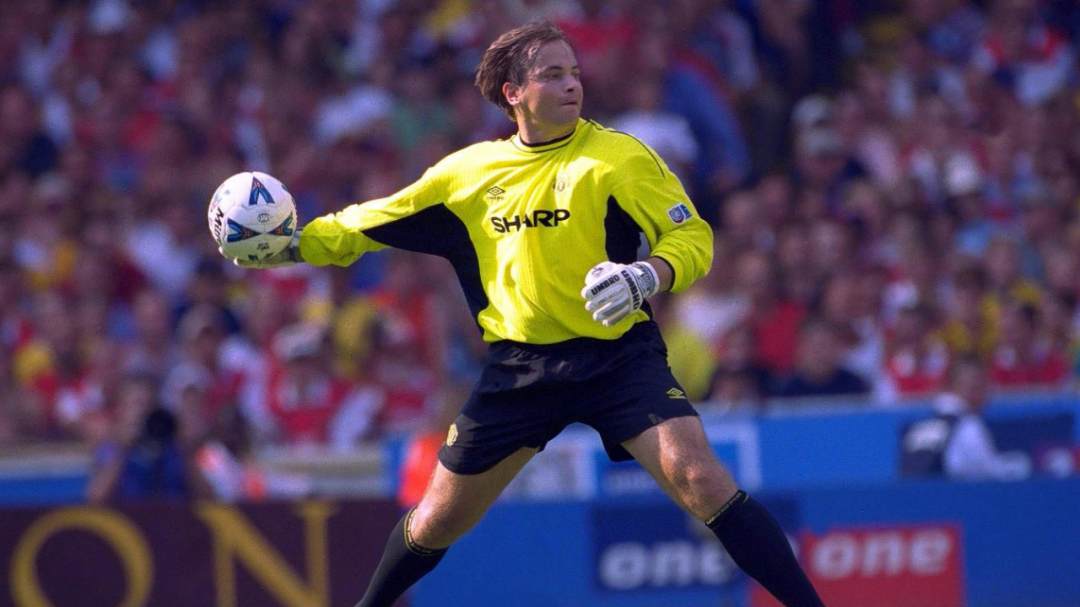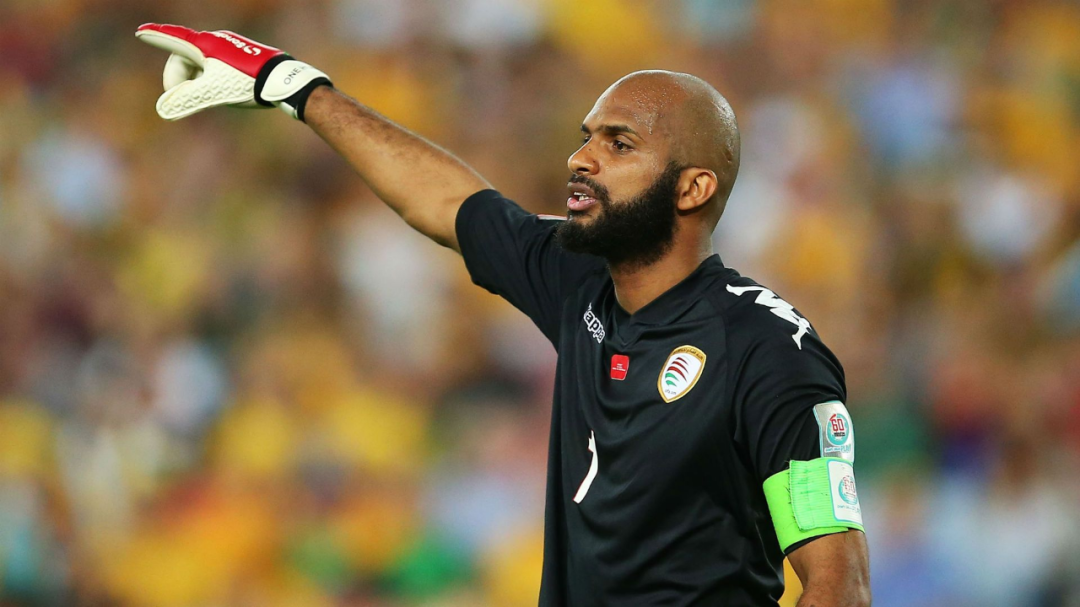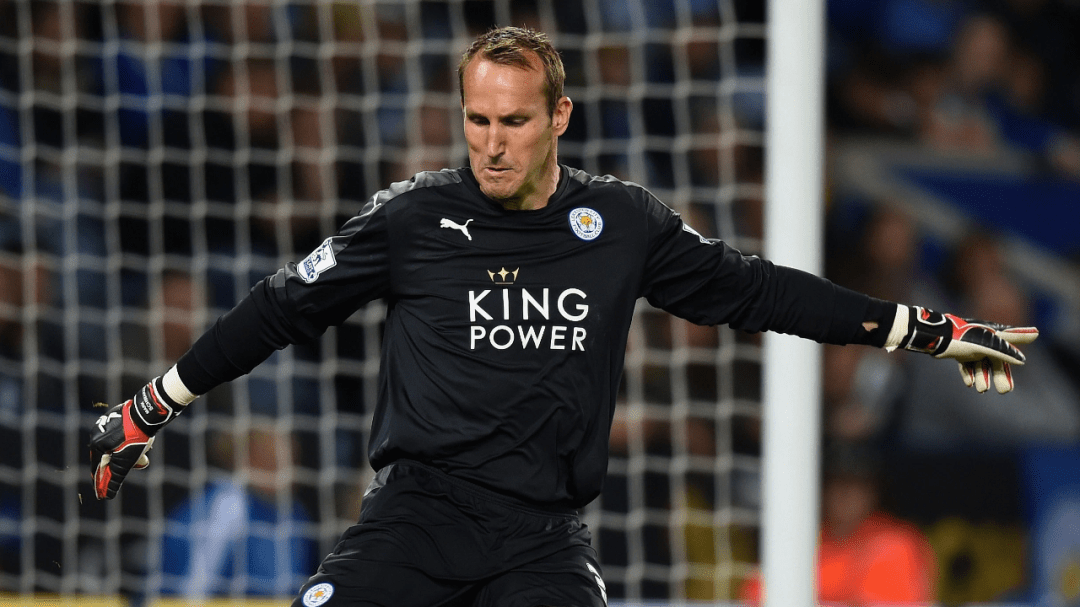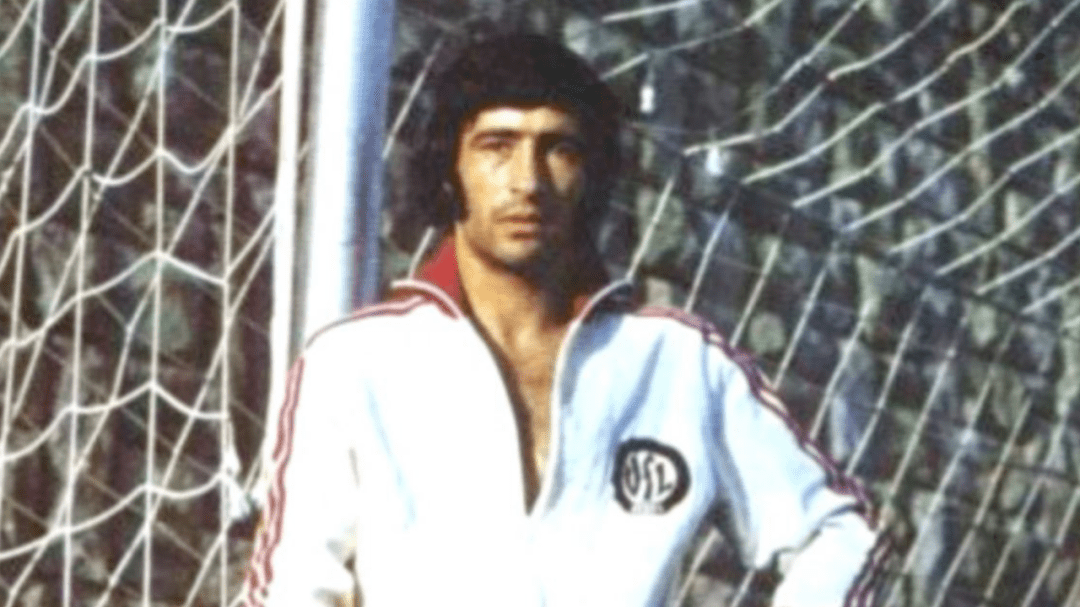On April 25, 2020, Between the Sticks turns one year old. To celebrate the site’s anniversary (as well as its 50th post), goalkeeper journalist Mouhamad Rachini is ranking the 10 best goalkeepers from each of the five continents; Africa, Asia/Oceania, Europe, North/Central America, and South America.
Goalkeepers are ranked on a mix of different factors, including team and individual honours, longevity, quality of leagues they played in, peak, and statistical success.
Goalkeepers are also grouped based on the country they REPRESENT, not the country they were born in. For example, Steve Mandanda, despite being born in an African country, is considered to be a European goalkeeper because he plays for France internationally.
You can access each piece by clicking on the attached hyperlink.

Honourable mentions
Ahmad Reza Abedzadeh (Iran): One of only a handful of players to have represented both Esteghlal and Persepolis, Abedzadeh is unbeaten in the Tehran Derby with seven wins and six draws. He’s a five-time Iranian Football League champion and a one-time Asian Club Championship champion. Abedzadeh captained Iran in the 1998 World Cup.
Hamood Sultan (Bahrain): The former Bahrain international spent his entire 24-year career playing for his local club Al-Muharraq SC; he represented them from 1974 to 1998. With 100 international caps to his name, he was Asia’s goalkeeper of the year in 1994 and was recognized as the top goalkeeper in three different Gulf Cups.
Mathew Ryan (Australia): Ryan’s proudest moment came when he backstopped Australia to Asian Cup glory in 2015 as the competition’s Golden Glove recipient. He also won top goalkeeper honours at the club level in both Australia and Belgium. Still just 28, he’ll likely crack into this top 10 by the end of his career.
Peter Thangaraj (India): South Asia’s greatest ever goalkeeper, Thangaraj represented India in two Olympics, three Asian Games and two Asian Cups. He backstopped India to gold at the 1962 Asian Games; four years after he was named Asian goalkeeper of the year. He won the Arjuna Award for Indian sporting excellence in 1967.

10. Amer Shafi (Jordan, multiple clubs, 1999 – PRESENT)
One of only two goalkeepers on this list who’s still active, Amer Shafi is still going strong at the age of 38. The Jordanian international made his pro debut as a teenager for Al-Yarmouk in 1999. He followed that up with his international debut in 2002; he was only 20 years old at the time.
Since then, Shafi has developed into one of the top goalkeepers in Middle Eastern football history. He’s made nearly 160 appearances for Jordan’s national team — including appearances in four separate Asian Cups — and he’s suited up for both of the country’s top two clubs, Al-Faisaly and Al-Wehdat. He won seven Jordanian Premier League titles with the latter, most recently in 2018.
A strong and reliable goalkeeper despite his height — he’s only 6 ft tall — Shafi doesn’t mind getting involved offensively too. He made his youth debut as a midfielder and scored a long-range effort in a 2018 friendly against India.

9. Seigo Narazaki (Japan, Yokohama Flügels / Nagoya Grampus, 1995 – 2018)
A Japanese club football legend, Seigo Narazaki spent nearly his entire 23-year career playing in Japan’s J1 League (with a season in the second division). He’s the only goalkeeper in league history to make a season’s best eleven in three different decades, and in 2010, he became the first and, for now, only goalkeeper to win the league’s MVP award.
But Narazaki never played for Japan’s elite clubs. His first four seasons were spent with Yokohama Flügels, with whom he won the 1998 Emperor’s Cup, and he served Nagoya Grampus in his final 19 seasons. In 2010, he won his first and only J1 League title.
Narazaki was capped 77 times by the Japanese national team, but he largely played second fiddle to Yoshikatsu Kawaguchi. He did start all four of Japan’s matches at the 2002 World Cup — a tournament they co-hosted — backstopping them to the knockout stage for the first time in the country’s history.

8. Yoshikatsu Kawaguchi (Japan, multiple clubs, 1995 – 2018)
Like Ubaldo Fillol vs. Hugo Gatti or Joseph-Antoine Bell vs. Thomas N’Kono, there’ll always be a “who’s better?’ debate surrounding Japanese goalkeeping icons Yoshikatsu Kawaguchi and Seigo Narazaki. But on my list, it’s Kawaguchi who gets the slim advantage.
Kawaguchi made his professional debut with Yokohama Marinos in 1995. The then-19-year-old goalkeeper had a formidable rookie season; he captured his first of two J1 League titles and was Rookie of the Year. Kawaguchi didn’t spend his entire career in Japan — he made stops in England and Denmark — but he was included in the J1 League’s 20th Anniversary Team as the only goalkeeper.
With 116 international appearances, Kawaguchi is Japan’s all-time most capped goalkeeper. He backstopped Japan to Asian Cup glory in 2000 and 2004, earning an All-Star XI nomination in the latter. He was also included in the 2001 Confederations Cup’s best 11 as Japan made it all the way to the final.

7. Mark Bosnich (Australia, multiple clubs, 1989 – 2009)
Between 1992 and 1999, Mark Bosnich was one of the Premier League’s top goalkeepers. In eight seasons with Aston Villa — including five of 20+ appearances — Bosnich won two Football League Cups and helped Villa finish as high as second place.
In that span, he also backstopped Australia to the 1997 Confederations Cup final and was recognized by the IFFHS as Oceania’s Goalkeeper of the Century.
It’s why Sir Alex Ferguson signed Bosnich as Peter Schmeichel’s replacement in 1999; the second time he had signed the Australian to Manchester United. Unfortunately, Bosnich only played one season as United’s starting goalkeeper, with his inconsistent performances costing him his job.
Bosnich will also be remembered for the controversy surrounding him; from the fine he received from the FA due to a Nazi salute to the $5,000-a-week cocaine addiction he developed in the mid-2000s.
Nonetheless, from a purely footballing standpoint, Bosnich was a quality goalkeeper at his peak.

6. Ali Al-Habsi (Oman, multiple clubs, 1998 – present)
Ali Al-Habsi is the poster boy of Arab goalkeepers for a lot of Premier League fans. The Omani spent a large chunk of his career in England; he represented Bolton Wanderers, Wigan Athletic, Brighton & Hove Albion, Reading, and West Brom at different parts of his career.
But Al-Habsi is most associated with Wigan and Reading. He was Wigan’s 2010-11 Player of the Year — his first season with the club — and he quickly built a reputation for himself as a formidable penalty stopper; he saved roughly 50% of all the penalties he faced with Wigan. And after joining Reading in 2015, Al-Habsi received Player of the Year honours from the club in both 2015-16 and 2016-17.
A fan-favourite in Oman, Al-Habsi made 135 appearances for the Oman national team and backstopped them to three Gulf Cup finals, including a championship-finish in 2009. He’s been recognized as the competition’s top goalkeeper in five different editions of the Gulf Cup.

5. Chow Chee Keong (Malaysia, multiple clubs, 1965 – 1985)
Born in the late 1940s, Chow Chee Keong was destined for greatness from his youth. He made his Malaysia U-20 debut as a 13-year-old in 1963, and he made his senior team debut as a 15-year-old two years later.
Asia quickly took note of his talent; for five consecutive years between 1966 and 1970, Chee Keong was officially recognized as Asia’s top goalkeeper. This, coupled with a sporting tour of Hong Kong with a Malaysian Chinese selection side, led to several offers from Hong Kong-based clubs, some of which offered record salaries.
At one point, Chee Keong even attracted interest from one of Brazil’s best; Cruzeiro Esporte Clube.
The Brazilian club were touring East Asia in 1972, and one of their stops was in Hong Kong to play a Hong Kong League XI. Chee Keong was the XI’s goalkeeper, and he was hailed as one of the game’s top performers in a 3-0 Cruzeiro win. Convinced by his heroics, Cruzeiro offered him a contract, but the Malaysian refused.
A year later, Chee Keong faced Pelé’s Santos side, and although he suffered a 2-0 loss, Chee Keong made an incredible save to deny Pelé, which earned him the Brazilian’s respect.
Word of this got out to Cruzeiro, who again tried signing Chee Keong — this time on the condition that he takes Brazilian citizenship. But again, Chee Keong refused.
It wouldn’t have been the first time Chee Keong played for a non-Asian club — he represented the English-based Bedford Town in 1967 and 1968 — but it would’ve certainly been his most high-profile move. Cross-continental transfers were still not a norm at the time, and most goalkeepers, especially Asian goalkeepers, played locally. So it was a big deal for a non-Asian club, let alone a Brazilian club, to offer such a contract to Chee Keong.
Chee Keong retired from football in 1985.

4. Lee Woon-jae (South Korea, Suwon Samsung Bluewings / Sangmu FC / Jeonnam Dragons, 1994 – 2012)
There’s no debate that Lee Woon-jae is by far South Korea’s greatest ever goalkeeper. The Cheongju native made his professional debut with Suwon Samsung Bluewings in 1996, and he’d go one to amass 410 appearances and 140 clean sheets across 16 seasons of South Korean league play.
While with the Bluewings, Lee won the K League 1 four times and the Korean League Cup four times. He’s also a four-time member of the K League 1’s Best XI, and won his only Asian Club Championship in 2001.
Lee was a particularly adept penalty saver. According to stats pulled from 2010, Lee saved roughly 45% of all the penalties he faced in the K League. He also won about 92% of all K League shootouts he participated in (11 wins and one loss).
Spanish fans are particularly aware of just how difficult it was to beat Lee from the penalty spot. In the 2002 World Cup quarter-finals, Lee turned aside Joaquín’s penalty in the shootout, which set the stage for Hong Myung-bo’s winning penalty moments later.
With over 130 international caps to his name, Lee is the most capped goalkeeper in both South Korean national team history and East Asian football history. He also kept 53 international clean sheets; a clean sheet percentage of nearly 44%. Some of those clean sheets came against the likes of Portugal, Spain, & Mexico.
Although Lee never won any major international silverware, he was part of an iconic generation for South Korean football. He backstopped South Korea to an unlikely fourth-place finish in the 2002 World Cup — a record-high for an Asian team — and he guided South Korea to third-place finishes in both the 2000 and 2007 Asian Cups. Lee was included in the 2007 edition’s team of the tournament
Lee is one of only two players to have played in both the 1994 & 2010 World Cups. He retired in 2012 just shy of his 40th birthday.

3. Mark Schwarzer (Australia, multiple clubs, 1990 – 2016)
If you were to tell someone in 1997 that Mark Schwarzer was going to develop into Australia’s greatest ever goalkeeper, they’d probably think you’re deluded. After all, Mark Bosnich was experiencing some of the best years of his career — 1997 would see him backstop Australia to the Confederations Cup final and win Oceania Footballer of the Year honours — and Schwarzer was coming off of unsuccessful stints with Dynamo Dresden, FC Kaiserslautern, & Bradford City.
But fast-forward to the present day and it’s the younger Mark that tops most people’s ‘best Australian goalkeepers’ lists.
It was in 1997 that Schwarzer’s career started to climb. Now of Middlesbrough, he appeared in 34 league games; the first time he had made that many league appearances in a single professional season. Schwarzer’s performances helped the club earn promotion to the English Premier League in 1998.
The 1997-98 season was Schwarzer’s first of a run that saw him make 20 or more English league appearances in 16-straight seasons. 14 of those seasons also saw him play 30 or more league games, culminating with his 36-game Premier League season in 2012-13.
Schwarzer’s crowning club moment came during the 2003-04 season. He played a then-career-high 44 games, including 36 Premier League games, as Middlesbrough won the League Cup. This was the only major club trophy Schwarzer ever won as a starting goalkeeper.
As the club appearances piled up, so too did the national team appearances. Between 1993 and 2013, Schwarzer made 109 appearances for the national team — an Australian record — and represented the Aussies in two World Cups and two Asian Cups. These include the 2006 World Cup, which was Australia’s first World Cup appearance since 1974, and the 2011 Asian Cup, which saw Australia finish as finalists for the first time.
Schwarzer retired from professional football following his release from Leicester City in 2016.

2. Nasser Hejazi (Iran, multiple clubs, 1964 – 1987)
Nasser Hejazi is undoubtedly one of Asia’s greatest ever goalkeepers, as evidenced by the fact that IFFHS members voted him second on their list of the continent’s greatest ever goalkeepers in the 20th century.
The native of Tehran made his debut with amateur club Nader FC in 1964 at the age of 14. A few years later, he made his professional debut with Taj Tehran, now known as Esteghlal FC, as an 18-year-old.
Hejazi tasted success almost immediately. In 1970, he backstopped Taj Tehran to continental glory via the Asian Club Championship. By defeating Hapoel Tel Aviv in the final, Taj Tehran became the first Iranian club to win the tournament. A year later, Hejazi won his and the club’s first Iranian league title.
Along with being a symbol of Esteghlal’s early success, Hejazi was also a national team icon. He represented Iran in the 1972 Olympics and the 1974 Asian Games (the latter of which he won), and he backstopped them to back-to-back Asian Cup championships in 1972 and 1976. In the 1976 edition, Hejazi kept a clean sheet in all four matches.
Hejazi gained global attention at the 1978 World Cup. Although Iran went out in the group stage with just one point, Hejazi’s performances, particularly in Iran’s 1-1 draw with Scotland, attracted the interest of Manchester United. The Iranian goalkeeper was invited to trial with the club following the tournament, and club manager Dave Sexton was so impressed by what he saw that he wanted to sign him to the club.
Unfortunately, the move fell through as there was no one from Iran’s governing football body who could arrange the contract extension (this was at the time of the Iranian Revolution).
Hejazi retired in 1987 following a short stint with Bangladeshi club Mohammedan. He immediately embarked on a 19-year career as a manager.

1. Mohamed Al-Deayea (Saudi Arabia, Al-Ta’ee / Al-Hilal, 1989 – 2010)
With 178 international caps to his name, Mohamed Al-Deayea is not only Asia’s most-capped player of all-time; he’s also the most capped goalkeeper in football history, with only Gianluigi Buffon’s total of 176 caps coming close.
Incredibly, Al-Deayea accumulated that tally over an international career that lasted just 13 years and 32 days. For reference, Buffon accumulated his total over an international career that lasted 20 years and 145 days.
It all goes to show just how effective of a goalkeeper Al-Deayea was.
The tall and slender Saudi Arabian made his professional debut with hometown club Al-Ta’ee in 1989. Originally a handball player, Al-Deayea was convinced by his older brother Abdullah (himself a national goalkeeping icon) to take up football. It was the correct decision, as the younger Mohamed would soon backstop Saudi Arabia to glory in the 1989 U-17 World Cup.
Mohamed would end up succeeding Abdullah at both the club level (taking over for him at Al-Ta’ee and later Al-Hilal) and the international level (he became the country’s number one goalkeeper in 1993, three years after Abdullah’s international retirement).
A perennial winner at both the club and national team levels, Al-Deayea won multiple Saudi Premier League titles and Crown Prince Cups. He also dominated the continental club scene; he won the AFC Champions League title, the Asian Super Cup and the Arab Cup Winners’ Cup in 2000, the Arab Super Cup in 2001, and the Asian Cup Winners’ Cup in 2002.
For Saudi Arabia, Al-Deayea played in two Asian Cup finals, winning the 1996 edition, and won two Gulf Cups in 1994 and 2003. He also represented the country in the 1994, 1998 & 2002 World Cups.
Revered for his consistency, flexibility and fondness for using his legs to stop shots, Al-Deayea was recognized by the IFFHS as Asia’s top goalkeeper of the 20th century in 1999.
Do you agree with my list? Which other Asian/Oceanic goalkeepers do you think should’ve made the cut? Let me know in the comments below or through Twitter via @BlameTheKeeper.


1.Mark Schwarzer
2.Lee Won-jae
3.Mohammed Al-Deayea
4.Mark Bosnich
5.Matthew Ryan
6.Ali Al-Habsi
7.Humood Sultan Mazkur
8.Nasser Hejazi
9.Brad Jones
10.Neil Etheridge
11.Chou Chee Keong
12.Zeljko Kalac
13.Eiji Kawashima
14.John Filan
15 Michael Petkovic
16.Yoshikatsu Kawaguchi
17.Seigo Narazaki
18.Ahmad Reza Abedzadeh
19.Alireza Beiranvand
20.Mitchell Langerak
LikeLike
Ahmad al Tarabulsi of Kuwaiti from the mid 1970s to the mid 80s. No list is complete without him. His performance against the USSR in the 1980 Olympics is legendary.
LikeLike
PLS DO RESEARCH ON THIS NAME….ARUMUGAM RENGASAMY(best goalkeeper in Asia)
LikeLike